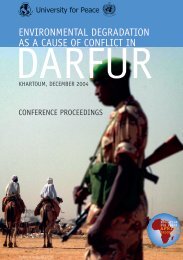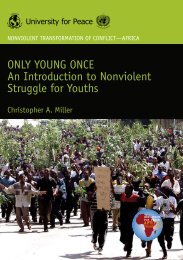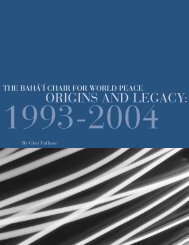who medicines strategy - libdoc.who.int - World Health Organization
who medicines strategy - libdoc.who.int - World Health Organization
who medicines strategy - libdoc.who.int - World Health Organization
You also want an ePaper? Increase the reach of your titles
YUMPU automatically turns print PDFs into web optimized ePapers that Google loves.
WHO MEDICINES STRATEGY 2004-2007 | 62HaitiCubaDominican RepublicEl SalvadorNicaraguaCosta RicaHondurasPanamaEcuadorPeruChileArgentinaROUND 1 & 2ROUND 2ROUND 1EstoniaBulgariaRomaniaGeorgiaSerbiaCroatiaMoroccoSenegalMauritaniaMaliGuineaSierra LeoneBurkina FasoTogoCôte d’IvoireLiberiaRwandaZambiaDR CongoCentral African RepublicGhanaNamibiaBeninNigeriaBotswanaSouth AfricaUkraineMoldovaArmeniaEgyptJordanTajikistanIranYemenEritreaEthiopiaSomaliaSudanKenyaComorosMozambiqueUgandaChadBurundiSwazilandMadagascarTanzaniaMalawiLesothoZimbabweKazakhstanMongoliaKyrgyzstanNorth KoreaChinaAfghanistanPakistanNepalLaosMyanmarPhillippinesIndonesiaEast TimorVietnamCambodiaThailandBangladeshIndiaSri LankaWestern Pacific Islands**Cook Islands, Federated States of Micronesia, Fiji,Kirbati, Niue, Palau, Samoa, Solomon Islands, Tonga,Tuvalu, VauautuEO 3.3Development assistance increasedfor access to <strong>medicines</strong>, includingthe Global FundRationaleThere is increased global political will andcommitment towards investment in health. Inparticular, there is a growing realization amonghigh-income countries that investing in healthis also an investment in development and inglobal security. In 2001, the Commission onMacroeconomics and <strong>Health</strong> called for a majorincrease in donor funding for health. A year later,the Global Fund 26 was launched to mobilizeadditional resources to combat HIV/AIDS, TB,and malaria, which together account for about 6million deaths a year. Out of a total of US$ 1.5billion approved by the Global Fund by January2003, 46% has been earmarked for procurementof <strong>medicines</strong> and commodities for use over thenext two years in over 150 programmes in 93countries.Other major funding sources for these prioritydiseases include the <strong>World</strong> Bank’s multi-countryHIV/AIDS programme (MAP) 27 and more recentlythe initiative by the President of the UnitedStates, involving US$ 15 billion for HIV/AIDSover five years. The disbursement of such largeamounts of money needs to be accompanied bythe development of quality, sustainable healthservices, including national essential <strong>medicines</strong>programmes, for which WHO is in a position toprovide the necessary technical assistance.WHO has developed an extensive portfolioof norms, standards, practical guidelines, andother management tools required for effectiveutilization of the above-mentioned funds atnational and global levels. Examples are theWHO prequalification scheme, price and patentinformation, <strong>int</strong>eragency guidelines* on donationsand on review of and support to <strong>medicines</strong>supplies agencies. In addition, WHO increasinglysupports Member States in their preparations forapplications to the Global Fund.Challenges remainingImproving access to essential <strong>medicines</strong> throughthe use of a range of external sources involves avariety of challenges. Of these, the need to ensuresustainability is arguably the most important anddifficult to address. Other challenges include: thegap between current funding levels and health











